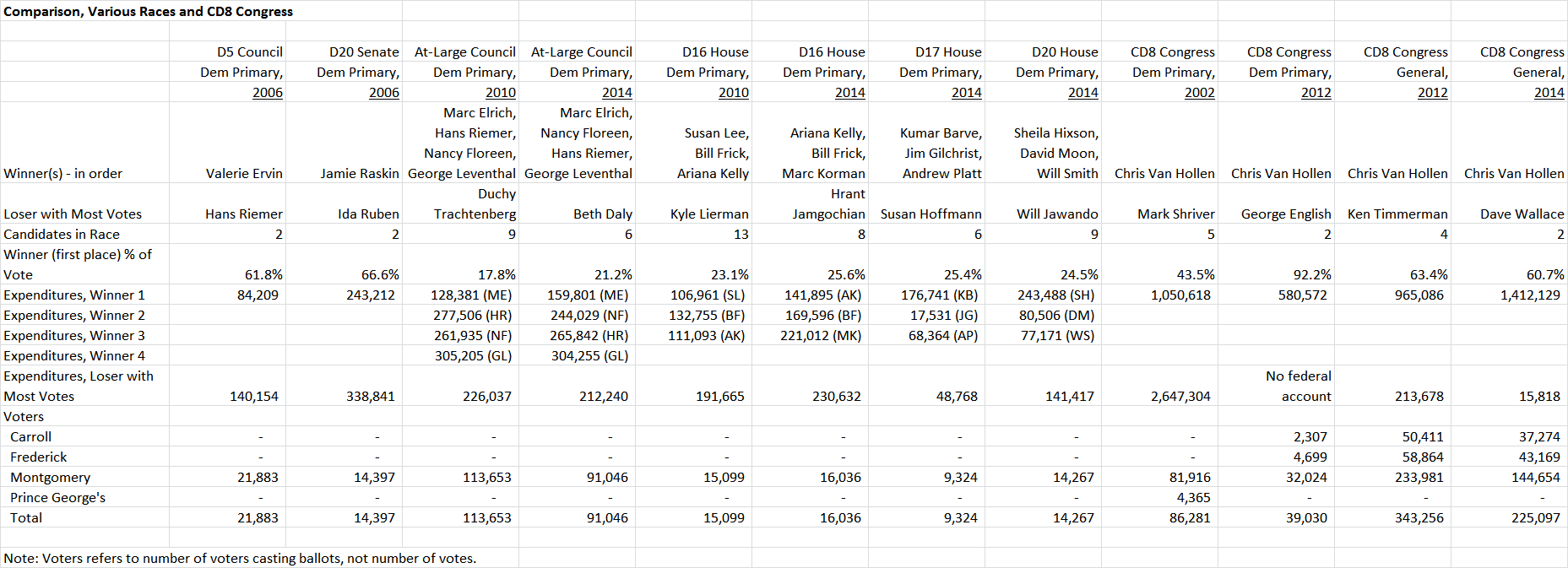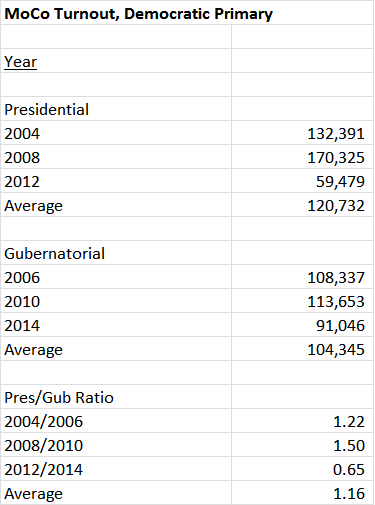Today, I am pleased to present a guest blog by Adam Pagnucco.
Few issues in county government have received more attention over the past two years than the operations of its Department of Liquor Control (DLC). In most parts of the United States, the alcohol industry has been divided into three tiers since the end of Prohibition: producers, distributors and retailers. DLC, which is a county department but derives its authority from state law, inserts itself into this structure as an extra middle-man between distributors and retailers. Instead of being able to sell directly to Montgomery County-based retailers, distributors must sell their products to DLC which in turn sells them to stores and restaurants. DLC then charges an extra mark-up which, after paying for its cost of operations, is returned to the county’s general fund as revenue. DLC also has a complete wholesale and retail monopoly on hard alcohol and sells it through county stores.
A sure way to increase costs, delays and inefficiencies in any distribution system is to add more middle-men, especially ones who do not add value to compensate for their fees. DLC is no exception and has been the subject of complaints for years. But mounting problems, growing press interest and the emergence of the agency as a political issue in last year’s election have brought DLC to the forefront of public attention.
It’s time for a hard look at the myth and reality of DLC.
Myth 1. The county needs DLC’s net income to function.
In Fiscal Year 2016, DLC is expected to transfer $24.5 million in net income to the county’s general fund. That amount represents 0.48% of the county’s total $5.1 billion in projected revenues.
The county regularly adapts to revenue shortfalls of much larger amounts. Its six-year fiscal plans contain revenue estimates that vary up and down by tens of millions of dollars before actual revenues are recorded. The council just approved a $54 million reduction in its recently passed operating budget. The Silver Spring Transit Center is $50 million over budget (and counting). Between Fiscal Years 2013 and 2015, the council reduced energy tax revenues by a cumulative $31 million per year. And in 2010, the council approved a $191 million reduction from the prior year’s tax-supported budget. None of these adjustments were painless, but the county got through them and the world did not end.
The county government can survive without DLC’s money. It simply chooses to collect it because it can.
Myth 2. DLC’s monopoly is needed for public safety.
Last year, Council Member Craig Rice claimed that “county control of liquor sales promotes safety, particularly when it comes to sales to those who are under age 21.” The DLC does indeed vigorously regulate alcohol licensees. It has an eleven-person Licensure, Regulation, and Education program that conducts 400 minor consumption compliance checks annually and trained more than 1,300 licensees in safe alcohol service last year. Additionally, the county’s Board of License Commissioners issues liquor licenses and can revoke and suspend them for violators. But these functions are separate from the county’s role as an alcohol merchant and do not depend on a sales monopoly to be effective. In fact, there is no evidence that the county’s monopoly itself contributes one way or the other to regulatory efficacy. In Washington State, which gave up its alcohol sales monopoly in 2012, both DUI arrests and drunk driving collisions actually FELL a year later.
Myth 3. Without DLC, high paying union jobs will be lost.
This claim is frequently made by MCGEO (Municipal and County Government Employees Organization), the union which represents more than 300 DLC employees along with many other rank-and-file workers in county government. The union has a responsibility to protect its members and generally does an excellent job of it, so its position is understandable. But if DLC’s operations are eventually eclipsed by the private sector, there is no guarantee that union employment will suffer a net loss. That is because many private wholesalers are organized by the International Brotherhood of Teamsters, another union noted for its aggressive defense of its members. MCGEO may prefer that wholesale alcohol employees pay dues to its treasury rather than the coffers of the Teamsters, but that is not a public policy concern that warrants large-scale extractions from county residents.
Myth 4. DLC is getting better.
George Griffin, the long-time Director of DLC, is a happy warrior and tireless defender of his agency. In 2005, Griffin was elected President of the National Alcohol Beverage Control Association (NABCA), a group of public alcohol organizations. He told NABCA of his efforts to continually improve DLC’s operations, including its new Enterprise Resource Planning program to increase efficiency and its installation of security cameras in warehouses. Griffin said, “POS (point of sale), inventory control, accounting, the warehouse, licensee ordering, buyers: they’ll all be tied together… from the retail stores, which will have running inventories, to our drivers, who will be equipped with handhelds.”
Years later, subsequent investigations revealed DLC to be anything but a model of efficiency. This past February, the county’s Inspector General found that DLC employees used “informal, handwritten notes” to track inventory, resulting in “significant decreases in the recorded quantities of warehouse inventories in FY2013 and FY2014.” NBC4 discovered DLC employees drinking and driving on the job and skimming cases of beer to sell on the black market. Restaurant owners have gone on the record with searing complaints about DLC’s service, with one even calling the agency an “evil empire.” Even Gino Renne, leader of the union that represents DLC’s employees and one of its biggest defenders, concedes, “This department needs to be more nimble.”
Myth 5. The County Council has called for “historic reform” at DLC.
On July 28, the County Council passed a resolution calling for a procedural change concerning some of DLC’s sales. The resolution is not binding but may be the basis for a future state-level bill, which is required to affect DLC. County Council Member Hans Riemer called the resolution “historic” in a mass email. But is it really?
The resolution addresses “special orders,” or products that are requested by DLC customers that are not part of its regular stock. These products are often specialty wines or craft beers that have not yet developed wide distribution in the county. Restauranteurs have complained for many years that DLC special orders are subject to long delays, big markups and substantial shortages, particularly when compared to the service offered by private wholesalers. The council’s resolution would allow customers to bypass DLC and deal directly with the private sector when requesting these items.
That sounds great except when considering the actual details of the resolution itself. Among other things, the resolution authorizes the county to establish a fee to “replace DLC estimated revenue lost by allowing the sale of special order beer and wines by private wholesalers.” That’s right, DLC would earn money on alcohol it does not even deliver. Multiple distributors testified at the council’s hearing on this resolution that the size of the fee, along with the additional cost of direct delivery to customers, might deter them from participating in this program. In other words, there would be no effective change.
DLC’s fee for doing nothing is reminiscent of Pepco’s “bill stabilization adjustment,” under which the utility was allowed to charge customers for power it did not deliver during outages. Many people condemned Pepco’s ability to charge for a service it did not provide. But Pepco is not part of county government. Perhaps that explains why what is unacceptable for Pepco is apparently acceptable for DLC.
The biggest myth of all is that DLC can be reformed from within by a series of small tweaks like this one. The idea resembles former Soviet Union leader Mikhail Gorbachev’s concept of “perestroika,” under which his communist government was expected to reform itself. The Soviet Union ultimately collapsed. But with its powerful protectors, DLC goes ever on.



